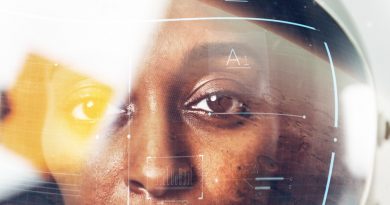The Future of Biometrics in the Transportation Industry
The following guest post was submitted by Door to Door Car Carrying, a transport industry in Australia.
Recently, U.S. Secretary of Transportation Anthony Foxx and Google’s Executive Chairman Eric Schmidt discussed the future of biometrics in the transportation industry. The talk, titled “Beyond Traffic: Understanding Challenges Yet To Come” was full of insights into the future of safety car transport and the convergence of biometric identification. Some of the ideas discussed could have a tangible effect on the future of car carries, especially the idea of using biometrics for car safety and tracking systems for car carriers and integrating it with existing tracking technology.
There are many benefits to safety car transport operations using biometric tracking technology. Monitoring each driver with unique biometric data can not only secure the safety and overall health of the driver, but also provides management with rich data to enhance company-wide decision making and individual performance evaluations. It was noted that on a macro level, the car carrying industry could make use of tracking data to reduce overhead by warning of excessive fuel consumption, identifying billing anomalies, reducing overtime expenses, and easily detect any unauthorized use of a vehicle.
It was speculated that since many insurance companies offer discounts to car carriers that install satellite tracking systems, similar initiatives will be implemented once biometric scanning becomes an industry wide standard. There are other tangible, immediate benefits to using biometric identity cards for your drivers. These types of ID cards can proactively reduce inventory loss, by not only allowing dispatch to locate lost or stolen property by tying it to geographical positing and check-in and check-out but also tying a vehicle to a specific driver. Studies show that knowing one’s activities are being monitored are an effective deterrent against theft, and complement the efforts that go into monitoring a driver. It was proposed that this level of data granularity would also help capitalize on being able to provide even more accurate fleet and asset data for analyzing profit and loss, as well as have the potential to revolutionize asset accountability and a fleet’s day to day budget preparations.
Read More: The Benefits of Using Cloud-Based Identity Management for Student Tracking
Biometric driver identification also promises to maximize car carrying safety. For example, upon recognizing and verifying a driver, the vehicle could then optimize the settings of the vehicle’s active driver assistance systems or other accident prevention measures specifically crafted for the identified person. This could take the form of restrictions imposed for new drivers, activating on-board accident prevention controls or adjusting suspension systems on the fly for an individual’s different driving styles. Another proposed scenario for a biometrics-enabled card system was the car adjusting the seat, backrest and angle position stored as the settings for the identified person as soon as they take the wheel and identity is verified. The biometric data could also monitor the driver’s headrest position as well as the angle and height of the vehicle’s rear view mirror. Other standard features of the proposed driver identification concepts included loading up a profile that included personalized settings for the vehicle’s navigation system, dashboard display and driver information systems and even communications systems built into a vehicle. While the biometric tracking scenarios focused mostly on safety, identification and data retention, the added comfort and customization can also be a factor worth keeping in mind.
















Pingback: Body Language Biometrics Replaces Passwords for Online Classes - M2SYS Blog On Biometric Technology